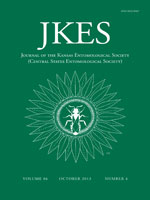Twig girdlers are beetles that girdle branches and trunks of living trees so that they can deposit their eggs in incisions made by their mandibles. There are few studies about the biology and ecology of the girdler Oncideres ocularis Thomson, which is considered a potential pest of forest plantations that can cause injuries to tree species of the family Fabaceae. The objective of this study was to increase knowledge related to the biological phases and the ecological patterns of girdling and oviposition of O. ocularis. Field studies were conducted at four plantations of Acacia mangium Willd located in the cities of Coimbra and Viçosa, State of Minas Gerais, Brazil. The incubation period of eggs was 12.1 ± 0.2 (SE) days and viability was 61% (n = 70). The number of egg incisions per girdled branch was 17.27 ± 1.0. The great number of eggs was laid in the mid-basal and middle sections of branch with a mean of 5.80 ± 0.38 and 4.97 ± 0.3 eggs on these portions. The base diameter of the girdled branches was 9.88 mm ± 0.18 and the mean length was 99.21 cm ± 2.23. A girdled branch by O. ocularis led to an average loss of leaf area of 4233.05 cm2 per tree that corresponds to 0.46% of total leaf area. Other beetles that emerged from the girdled branches were Engyum quadrinotatum (Thomson), Orthostema abdominale (Gyllenhal), Nesozineus bucki (Breuning) and Lepturges sp.
How to translate text using browser tools
1 October 2013
Bioecology of Oncideres ocularis Thomson (Coleoptera: Cerambycidae) on Acacia mangium Willd. (Fabaceae)
Pedro Guilherme Lemes,
Norivaldo dos Anjos,
Isaac R. Jorge
ACCESS THE FULL ARTICLE
branch girdling
foliar loss
oviposition patterns
twig girdler





